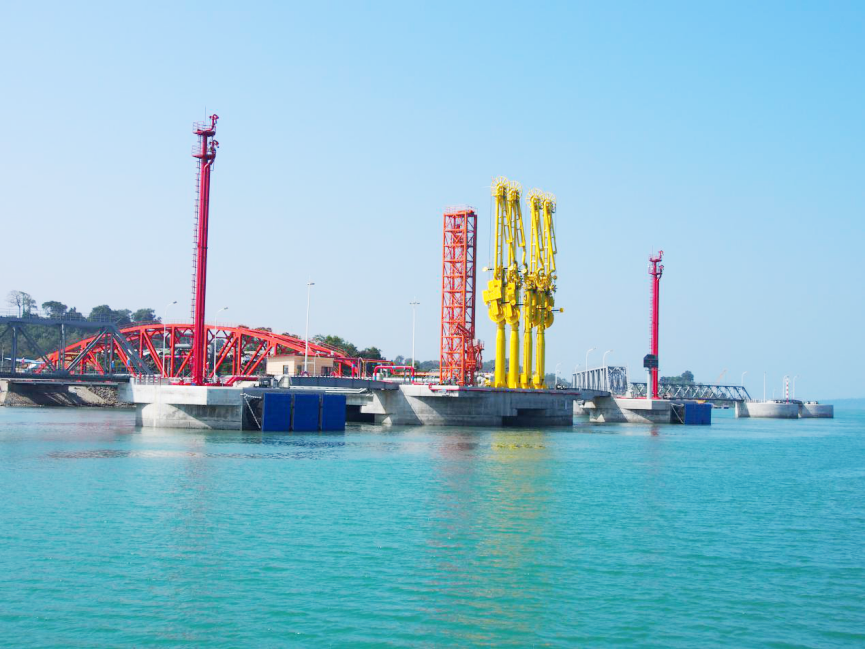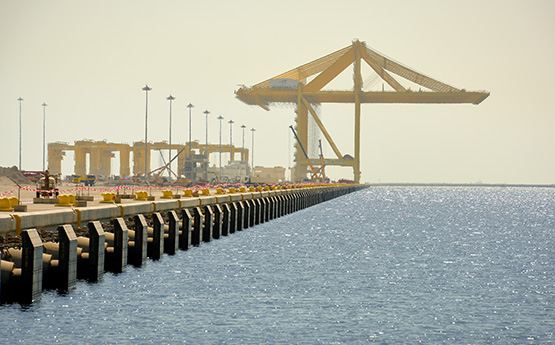
Project Name: China-Myanmar Crude Oil Pipeline Project
Host Country: Republic of the Union of Myanmar
Project Duration: April 2011 – July 2015
Project specification:
The China-Myanmar Crude Oil Pipeline is the fourth largest energy import channel after the Central Asia natural gas pipeline, the China-Russia crude oil pipeline, and the China-Kazakhstan oil pipeline. The completion of the China-Myanmar Crude Oil Pipeline will enable crude oil to be transported directly from Southwest China to the mainland via Myanmar without passing through the Malacca Strait. The Crude Oil Pipeline supporting wharf and channel project is a national energy strategic project and the starting point of the China-Myanmar Crude Oil Pipeline project, and highly valued by the governments of China and Myanmar. The construction of the project consists the design and construction of a 300000 DWT crude oil wharf, 38 km waterway dredging, Made Initial Station oil tank farm earthwork balance and ground treatment Project, and a large slope retaining project. The contract amount is worth 359 million US dollars.
Characteristics and Significance of the Project:
The Republic of the Union of Myanmar, located at latitude 9-28 degrees north and longitude 92-101 degrees east, is adjacent to the Andaman Sea in the southwest, India, and Bangladesh in the northwest, China in the northeast, and Thailand and Laos in the southeast. The main economic sources are agriculture, minerals, tourism, natural gas, rubber, and wood. The starting point of the China-Myanmar Crude Oil Pipeline is located at Madeira Island on the west coast of Myanmar, and the starting point of the natural gas pipeline is at Kyaukpyu Port, which also plays a positive role in improving Myanmar's infrastructure, increasing employment opportunities and the urbanization process along the pipeline.
The project has improved Myanmar's infrastructure, increasing employment opportunities and promoting the urbanization process along the pipeline. , This also drive the development of Myanmar's petrochemical industry, meeting Myanmar's domestic demand for energy (i.e. Myanmar needs to import a large amount of diesel and gasoline every year), driving the economic development along the pipeline, as well cs driving the overall economic development of Myanmar, and brings more benefits to the people of Myanmar. Also from another perspective, Myanmar's economic development will further strengthen its economic and trade cooperation with all its neighbors.
China and Myanmar are friendly neighbors linked with adjoining mountains and rivers and the traditional friendship between the two peoples goes back to ancient times. Since ancient times, the people of the two countries have been called "Paukphaw" (brother). The completion of the project is also a historical witness of the friendship between China and Myanmar. As there is no school on the Madeima island (the first station of the China Myanmar crude oil pipeline) despite the population nearly 4000 Islanders, the CHEC established a primary school for the local people, providing school supplies and invited teachers to teach 690 local children; also built Myanmar labor children's school for children of migrant workers on the island; A total of RMB 60000 yuan was donated to resume school for 21 local orphans. The project department also regularly provided daily necessities and assistance to 71 local elderly people. Due to Myanmar being a Buddhist country, the project department also renovated the local temples for free and regularly visits the monks to better integrate them into the local society.

- Abidjan Port Expansion Project -Côte d'Ivoire
- In the Abidjan Port Expansion Project, the construction process consists of a new container terminal with three berths in total. The total length of the quay coastline is 1312m, and the water depth of the terminal structure is - 18 m, forming a land area of 37.8 hectares, an...
- More>>

- Doha Qatar New Port (NPP) Project -Doha
- The construction contract undertaken by the CHEC is Phase I of the project, with a contract amount of about 880 million US dollars consisting of 11 terminals, i.e. container terminals (number1 to 3), general cargo terminals, vehicle terminal yacht terminal, maritime termin...
- More>>
 Global office
Global office
 contact us
contact us